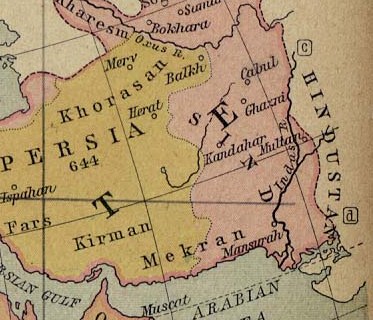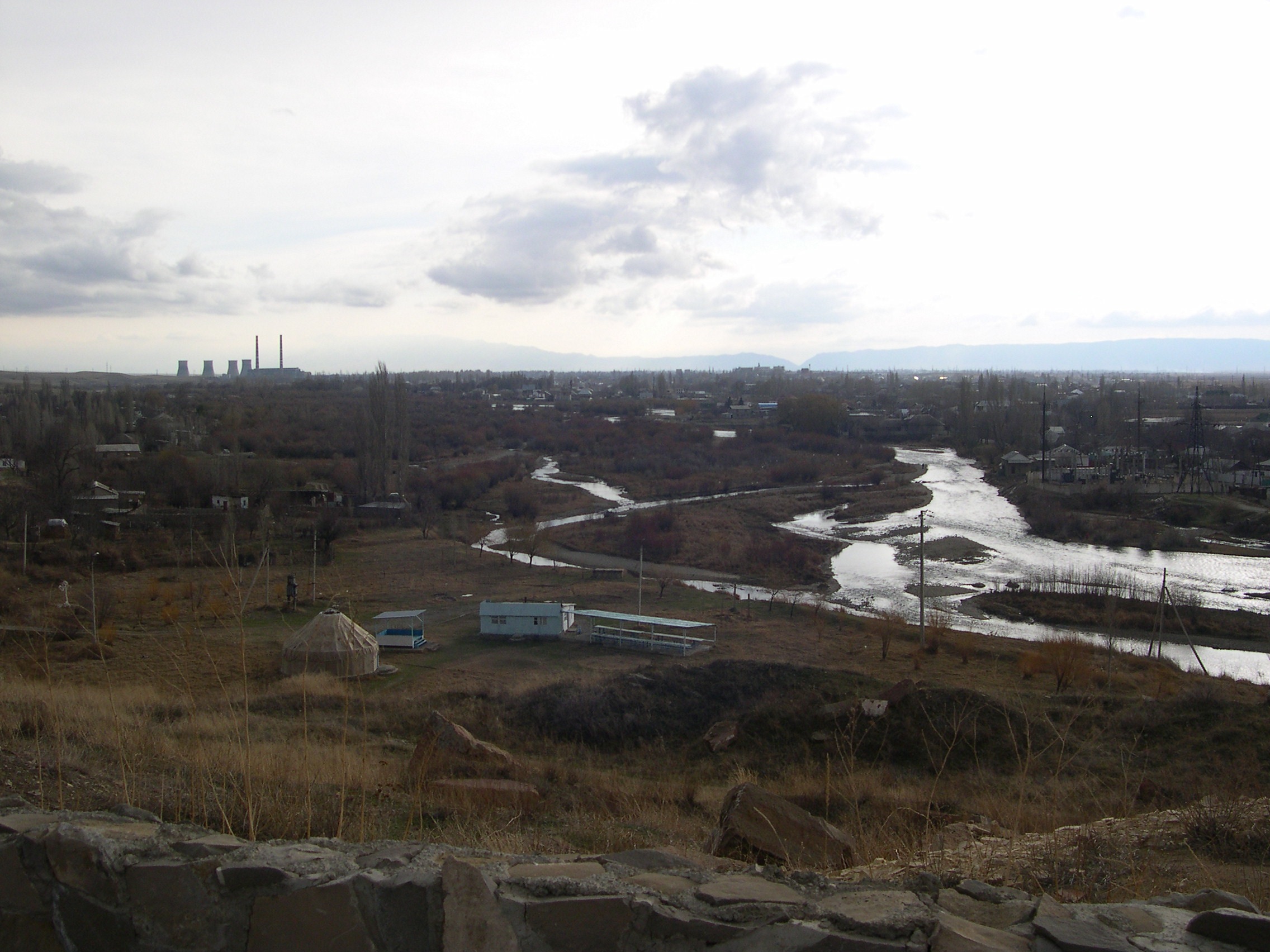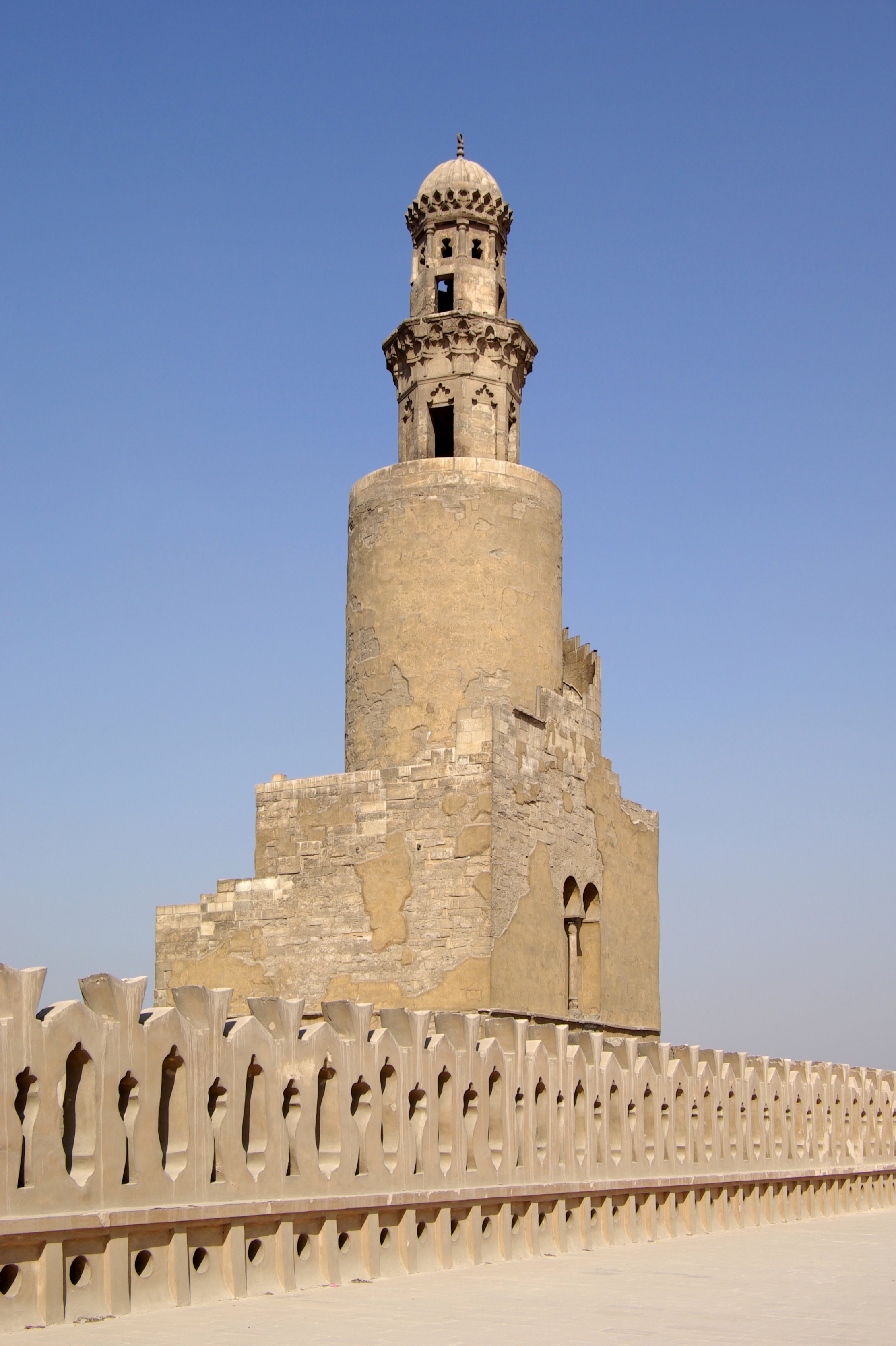|
Abd Al-Malik Ibn Salih
ʿAbd al-Malik ibn Ṣāliḥ ibn ʿAlī () (, ''Abimelech'', in Greek sources; 750–812 CE) was a member of the Banu Abbas who served as general and governor in Syria and Egypt. He distinguished himself in several raids against the Byzantine Empire, but his great influence and authority in Syria resulted in Caliph Harun al-Rashid imprisoning him in 803. Released in 809, he was dispatched in 812 by Caliph al-Amin to gather troops against his brother al-Ma'mun in the ongoing civil war between the two brothers, but died of an illness. Biography Abd al-Malik's family were among the most powerful clans during the early Abbasid era. They played an important role in the final overthrow of the Umayyads in Syria, which thereafter became their particular power base. He was the nephew of Abd Allah ibn Ali, the first Abbasid governor of Syria, and a son of Salih ibn Ali, the first Abbasid governor of Egypt and successor of Abdallah in Syria after the latter staged a failed uprising in 754 ... [...More Info...] [...Related Items...] OR: [Wikipedia] [Google] [Baidu] |
List Of Rulers Of Mosul
This is a list of the rulers of the Iraqi city of Mosul. Umayyad governors * Muhammad ibn Marwan (ca. 685–705) * Yusuf ibn Yahya ibn al-Hakam (ca. 685–705) * Sa'id ibn Abd al-Malik (ca. 685–705) * Yahya ibn Yahya al-Ghassani (719–720) * Marwan ibn Muhammad ibn Marwan (720–724) * Al-Hurr ibn Yusuf (727–731/32) * Yahya ibn al-Hurr (732/33) * Al-Walid ibn Talid (733–739) * Abu Quhafa ibn al-Walid (739–743) * Al Qatiran ibn Akmad ibn al-Shaybani (744–745) * Hisham ibn Amr-al Zubayr (745–750) Abbasid governors * Muhammad ibn Sawl (750–751) * Yahya ibn Muhammad ibn Ali (c. 751) * Ismail ibn Ali ibn Abdullah (751–759) * Malik ibn al-Haytham al-Khuzai (759–762) * Ja'far ibn Abu Jafar (762–764) * Khalid ibn Barmak (764–766) * Ismail ibn Abd Allah ibn Yazid (768–770) * Yazid ibn Usayd ibn Zafir al-Sulami (770) * Musa ibn Ka'b (771–772) * Khalid ibn Barmak and Musa ibn Mus'ab (772–775) * Ishaq ibn Sulayman al-Hashimi (776) * Hassan al ... [...More Info...] [...Related Items...] OR: [Wikipedia] [Google] [Baidu] |
Isma'il Ibn Salih Ibn Ali Al-Hashimi
Ismāʿīl ibn Ṣāliḥ ibn ʿAlī al-Hāshimī () was an eighth century Abbasid governor of Egypt and Aleppo. A member of the Abbasid family, he was a son of Salih ibn Ali and a first cousin of the first two Abbasid caliphs al-Saffah () and al-Mansur (). During the reign of Harun al-Rashid () he was appointed as governor of Egypt in 797. After an administration lasting slightly less than a year, he was dismissed from that province and instead posted to Aleppo and Qinnasrin, which he proceeded to hold for an unspecified length of time.The latest possible date for the end of his Aleppine governorship is 802. ; . Ibn al-Adim goes on to say that Isma'il later served as governor of Damascus Damascus ( , ; ) is the capital and List of largest cities in the Levant region by population, largest city of Syria. It is the oldest capital in the world and, according to some, the fourth Holiest sites in Islam, holiest city in Islam. Kno ..., but Cobb was unable to find any corroborat ... [...More Info...] [...Related Items...] OR: [Wikipedia] [Google] [Baidu] |
Al-Mansur
Abū Jaʿfar ʿAbd Allāh ibn Muḥammad al-Manṣūr (; ; 714 – 6 October 775) usually known simply as by his laqab al-Manṣūr () was the second Abbasid caliph, reigning from 754 to 775 succeeding his brother al-Saffah (). He is known for founding the 'Round City' of Madinat al-Salam, which was to become the core of imperial Baghdad. Modern historians regard al-Mansur as the real founder of the Abbasid Caliphate, one of the largest polities in world history, for his role in stabilizing and institutionalizing the dynasty.''The Cambridge History of Islam, volume 1: The Formation of the Islamic World'', ed. Chase F Robinson, March 2011 Background and early life According to al-Suyuti's ''History of the Caliphs'', al-Mansur lived 95 AH – 158 AH (714 CE – 6 October 775 CE). Al-Mansur was born at the home of the Abbasid family in Humeima (modern-day Jordan) after their emigration from the Hejaz in 714 (95 AH). His mother was Sallamah, a slave woman. Al-Mansur was a brot ... [...More Info...] [...Related Items...] OR: [Wikipedia] [Google] [Baidu] |
Al-Saffah
Abu al-ʿAbbās Abd Allāh ibn Muḥammad ibn ʿAlī ibn ʿAbd Allāh ibn al-ʿAbbās (; 721/722 – 8 June 754), known by his laqab, ''laqab'' al-Saffah (), was the first caliph of the Abbasid Caliphate, one of the longest and most important caliphates in Islamic history. His ''al-Saffāḥ'' means "the Blood-Shedder". It may refer to his ruthless tactics, or perhaps it was used to intimidate his enemies, It was during his inaugural homage as Caliph, delivered in the Great Mosque of Kufa, that he called himself "''al-Saffah''" ("the Blood-Shedder"), and this title has deservedly stuck to him due to his massacring and hunting down Umayyad Caliphate, Umayyads in cold blood. as it was common in history to adopt such names, an example for this is "Al Abbas" which means a "Lion that scares away other animals". Family origins and earlier history As-Saffāḥ, born in Humeima (modern-day Jordan), was head of one branch of the Hashemite, Banu Hāshim from Arabia, a subclan of t ... [...More Info...] [...Related Items...] OR: [Wikipedia] [Google] [Baidu] |
Al-Fadl Ibn Salih
Al-Faḍl ibn Ṣāliḥ ibn ʿAlī ibn ʿAbd Allāh ibn al-ʿAbbās () (740Tabari, Hillenbrand, 1989, p.55.–789) was the Abbasid governor of a number of different provinces in Syria during the late 8th-century CE. He was also governor of Egypt for a brief period of time. He was related to the Abbasid caliphs and was part of the Banu Salih branch of the Abbasid dynasty. Career In 755, al-Fadl led the pilgrim caravan destined for Mecca and Medina for the annual ''hajj''. He became governor of Jund Dimashq (whose principal city was Damascus) in 766 and three years later he added Jund Qinnasrin (whose principal city was Aleppo) to his domain during the reign of the caliph al-Mansur. In 775, he was appointed governor of the region of al-Jazira north of Damascus by the Abbasid caliph al-Mahdi. He moved to al-Jazira the same year. Al-Fadl returned to Damascus following his trip to Jerusalem in 780 where he accompanied al-Mahdi as part of his entourage.Cobb, 2001, pp.27-28. It was aro ... [...More Info...] [...Related Items...] OR: [Wikipedia] [Google] [Baidu] |
Abd Allah Ibn Ali
Abū Muḥammad ʿAbd Allāh ibn ʿAlī (; – 764 CE) was a member of the Abbasid dynasty, and played a leading role in its rise to power during the Abbasid Revolution. As governor of Syria, he consolidated Abbasid control over the province, eliminating the remnants of the Umayyad dynasty and suppressing pro-Umayyad uprisings. After the death of his nephew and first Abbasid caliph, al-Saffah, in 754, he launched a bid for the caliphal title against al-Saffah's brother, al-Mansur, but was defeated and imprisoned. He was killed in 764. Role in the Abbasid Revolution Abd Allah was a member of the Abbasid family, and uncle to the first two Abbasid caliphs, al-Saffah () and al-Mansur (). By early 749, the anti-Umayyad uprising that had begun under Abu Muslim in Khurasan had prevailed in the eastern lands of the Caliphate, and the Khurasani armies swept west across Persia to the borders of Iraq. In October 749, al-Saffah was proclaimed Caliph at Kufa, and quickly gained the acceptan ... [...More Info...] [...Related Items...] OR: [Wikipedia] [Google] [Baidu] |
Umayyad Caliphate
The Umayyad Caliphate or Umayyad Empire (, ; ) was the second caliphate established after the death of the Islamic prophet Muhammad and was ruled by the Umayyad dynasty. Uthman ibn Affan, the third of the Rashidun caliphs, was also a member of the clan. The family established dynastic, hereditary rule with Mu'awiya I, the long-time governor of Bilad al-Sham, Greater Syria, who became caliph after the end of the First Fitna in 661. After Mu'awiya's death in 680, conflicts over the succession resulted in the Second Fitna, and power eventually fell to Marwan I, from another branch of the clan. Syria remained the Umayyads' main power base thereafter, with Damascus as their capital. The Umayyads continued the Early Muslim conquests, Muslim conquests, conquering Ifriqiya, Transoxiana, Sind (caliphal province), Sind, the Maghreb and Hispania (al-Andalus). At its greatest extent (661–750), the Umayyad Caliphate covered , making it one of the largest empires in history in terms of ar ... [...More Info...] [...Related Items...] OR: [Wikipedia] [Google] [Baidu] |
Al-Ma'mun
Abū al-ʿAbbās Abd Allāh ibn Hārūn al-Maʾmūn (; 14 September 786 – 9 August 833), better known by his regnal name al-Ma'mun (), was the seventh Abbasid caliph, who reigned from 813 until his death in 833. His leadership was marked by the power and prosperity of the Abbasid Caliphate, al-Ma'mun promoted the Graeco-Arabic translation movement, the House of Wisdom, flowering of learning and the sciences in Baghdad, and the publishing of al-Khwarizmi's The Compendious Book on Calculation by Completion and Balancing, book now known as "Algebra". Making him one of the most important caliphs in the Islamic Golden Age. He is also known as a proponent of the rational Islamic theology of Mu'tazilism. Al-Ma'mun succeeded his half-brother al-Amin after a Fourth Fitna, civil war, much of his reign was spent on peace campaigns. His strong support for Mu'tazilism led him to imprison a Sunni Islam, Sunni Imam, Ahmad ibn Hanbal in an event that became known as ''mihna.'' Al-Ma'mun's for ... [...More Info...] [...Related Items...] OR: [Wikipedia] [Google] [Baidu] |
Al-Amin
Abū Mūsā Muḥammad bin Hārūn al-Amīn (; April 787 – 24/25 September 813), better known by just his laqab of al-Amīn (), was the sixth Abbasid caliph from 809 to 813. Al-Amin succeeded his father, Harun al-Rashid, in 809 and ruled until he was deposed and killed in 813, during the civil war by his half-brother, al-Ma'mun. Early life and the issue of succession Muhammad, the future al-Amin, was born in April 787 to the Abbasid caliph Harun al-Rashid () and Zubayda, herself descended from the second Abbasid caliph, al-Mansur (). Muhammad had an elder half-brother, Abdallah, the future al-Ma'mun (), who had been born in September 786. However, Abdallah's mother was a Persian slave concubine, and his pure Abbasid lineage gave Muhammad seniority over his half-brother. Indeed, he was the only Abbasid caliph to claim such descent. Already in 792, Harun had Muhammad receive the oath of allegiance ('' bay'ah'') with the name of ''al-Amīn'' ("The Trustworthy"), effectively ... [...More Info...] [...Related Items...] OR: [Wikipedia] [Google] [Baidu] |
Byzantine Empire
The Byzantine Empire, also known as the Eastern Roman Empire, was the continuation of the Roman Empire centred on Constantinople during late antiquity and the Middle Ages. Having survived History of the Roman Empire, the events that caused the fall of the Western Roman Empire in the 5th centuryAD, it endured until the fall of Constantinople to the Ottoman Empire in 1453. The term 'Byzantine Empire' was coined only after its demise; its citizens used the term 'Roman Empire' and called themselves 'Romans'. During the early centuries of the Roman Empire, the western provinces were Romanization (cultural), Latinised, but the eastern parts kept their Hellenistic culture. Constantine the Great, Constantine I () legalised Christianity and moved the capital to Constantinople. Theodosius I, Theodosius I () made Christianity the state religion and Greek gradually replaced Latin for official use. The empire adopted a defensive strategy and, throughout its remaining history, expe ... [...More Info...] [...Related Items...] OR: [Wikipedia] [Google] [Baidu] |
Egypt In The Middle Ages
Following the Muslim conquest of Egypt, Islamic conquest in 641-642, Lower Egypt was ruled at first by governors acting in the name of the Rashidun Caliphs and then the Umayyad Caliphs in Damascus, but in 750 the Umayyads Abbasid Revolution, were overthrown. Throughout Islamic rule, Al-Askar, Askar was named the capital and housed the ruling administration. The conquest led to two separate provinces all under one ruler: Upper Egypt, Upper and Lower Egypt. These two very distinct regions were governed by the military and followed the demands handed down by the governor of Egypt and imposed by the heads of their communities. Egypt was ruled by many dynasties from the start of Islamic control in 639 until the early 16th century. The Umayyad period lasted from 658 to 750. The Abbasid period which came after was much more focused on taxes and centralizing power. In 868, the Tulunids, ruled by Ahmad ibn Tulun, expanded Egypt's territory into the Levant. He would rule until his death in ... [...More Info...] [...Related Items...] OR: [Wikipedia] [Google] [Baidu] |
Banu Abbas
The Abbasid dynasty or Abbasids () were an Arab dynasty that ruled the Abbasid Caliphate between 750 and 1258. They were from the Qurayshi Hashimid clan of Banu Abbas, descended from Abbas ibn Abd al-Muttalib. The Abbasid Caliphate is divided into three main periods: Early Abbasid era (750–861), Middle Abbasid era (861–936) and Later Abbasid era (936–1258). A cadet branch of the dynasty also ruled as ceremonial rulers for the Mamluk Sultanate (1261–1517) until their conquest by the Ottoman Empire. Ancestry The Abbasids descended from Abbas, one of Muhammad's companions (as well as his uncle) and one of the early Qur'an scholars. Therefore, their roots trace back to Hashim ibn 'Abd Manaf and also Adnan in the following line: Al-‘Abbas ibn Abdul-Muttalib ibn Hashim ibn Abd Manaf ibn Qusai ibn Kilab ibn Murrah ibn Ka'b ibn Lu'ay ibn Ghalib ibn Fihr ibn Malik ibn An-Nadr ibn Kinanah ibn Khuzaima ibn Mudrikah ibn Ilyas ibn Mudar ibn Nizar ibn Ma'add ibn Adnan. Histo ... [...More Info...] [...Related Items...] OR: [Wikipedia] [Google] [Baidu] |






